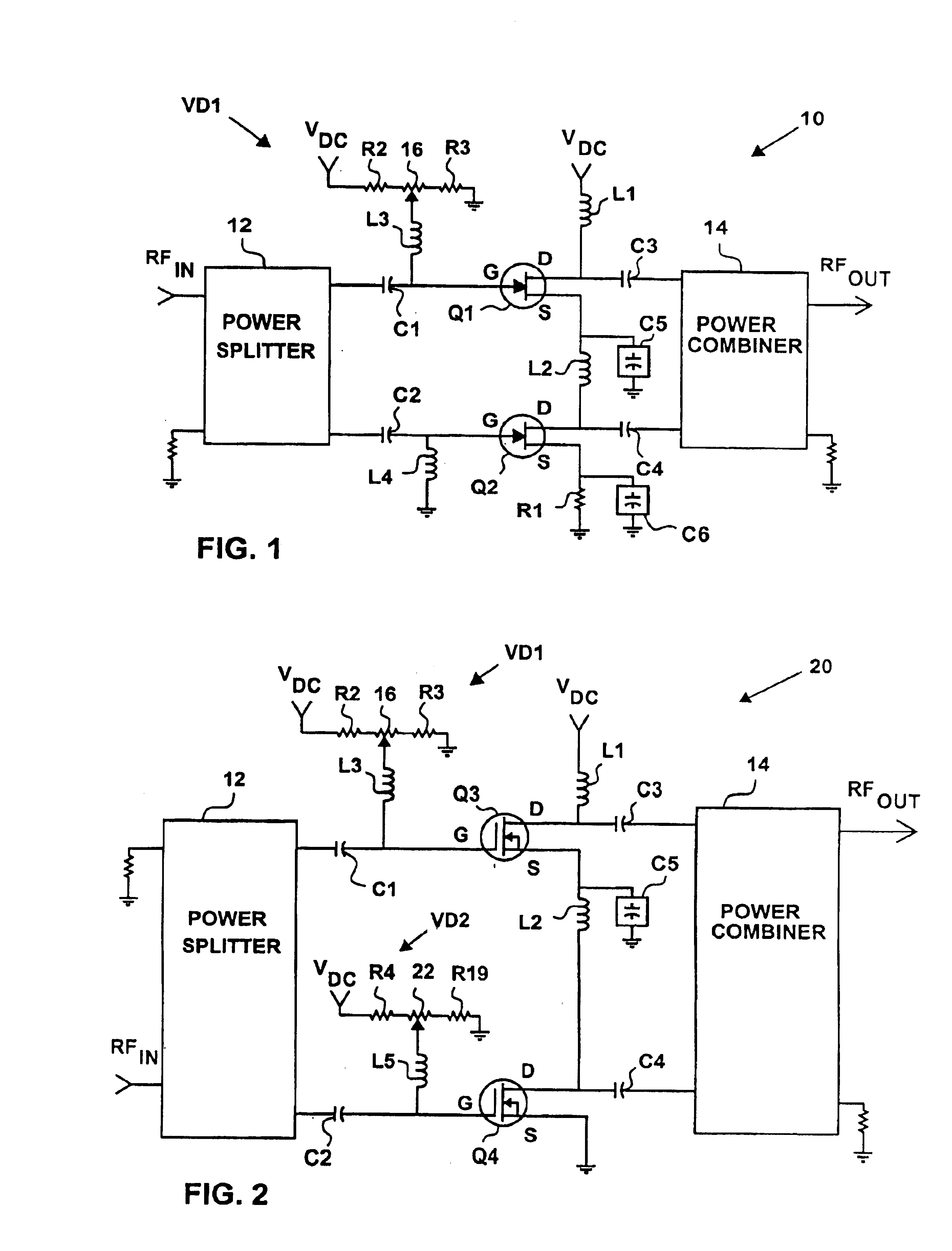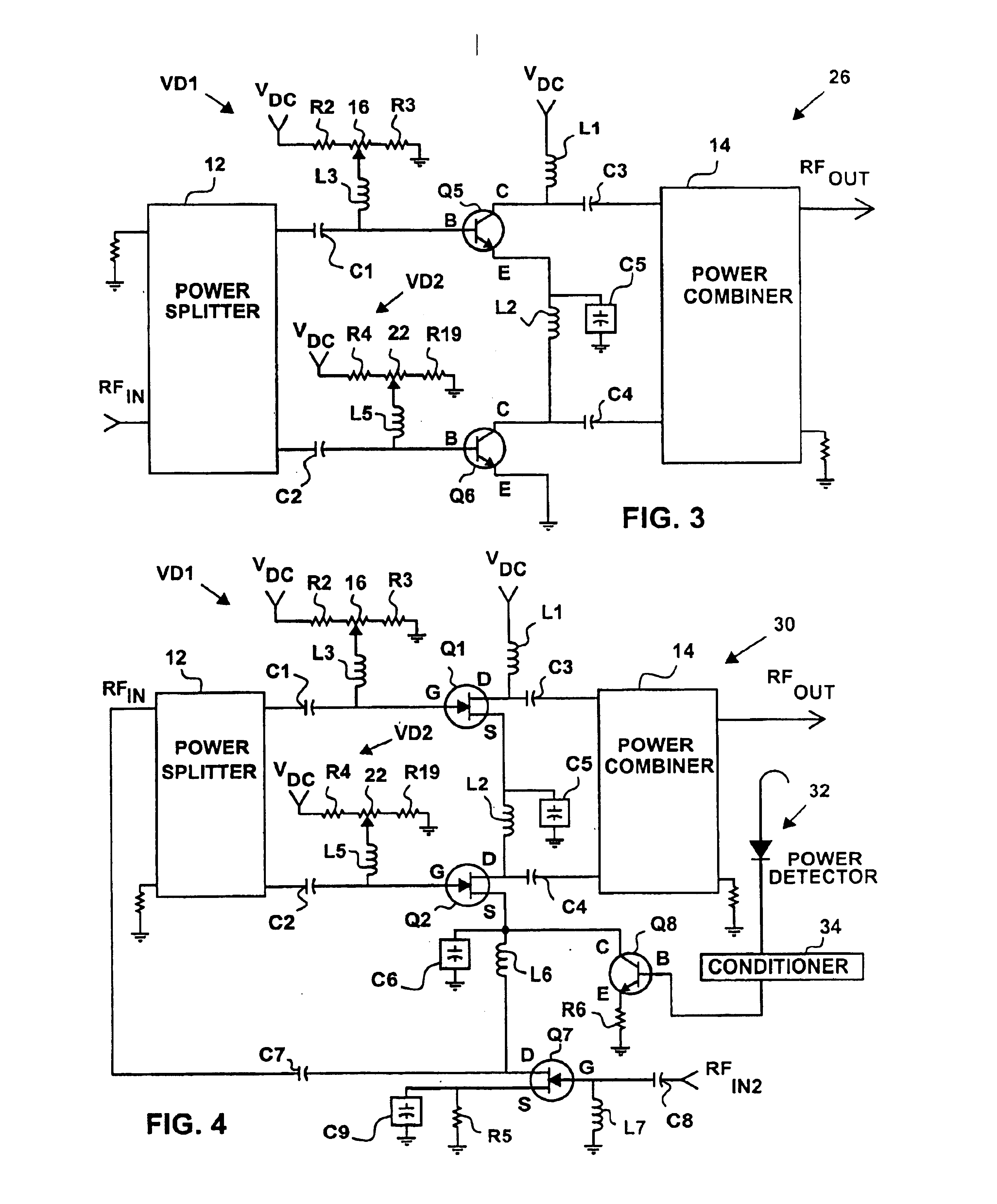Shared-current electronic systems
a technology of electronic systems and shared current, applied in the direction of amplifiers, amplifiers with semiconductor devices/discharge tubes, amplifiers, etc., can solve the problems of affecting the operation the maximum operating voltage of solid-state electronic devices is too low for the dc source voltage available, and the use of gallium arsenide fets has presented a problem, so as to achieve maximum isolation, prevent rf crosstalk, and maximize power efficiency
- Summary
- Abstract
- Description
- Claims
- Application Information
AI Technical Summary
Benefits of technology
Problems solved by technology
Method used
Image
Examples
Embodiment Construction
[0075]Referring now to FIG. 1, an rf power amplifier, or shared-current electronic system, 10 includes solid-state amplifying devices, solid-state electronic devices, n-channel gallium arsenide field-effect transistors, GaAsFETs, or FETs, Q1 and Q2 that are connected in series between a positive supply voltage, or source voltage, VDC and an electrical ground.
[0076]A first rf choke L1 connects the supply voltage VDC to a drain terminal of the FET Q1, a second rf choke L2 connects a source terminal of the FET Q1 to a drain terminal of the FET Q2, and a resistor R1 connects a source terminal of the FET Q2 to the electrical ground.
[0077]The rf power amplifier 10 also includes an rf power splitter 12 and an rf power combiner 14. The rf power splitter 12 is connected to gate terminals of the FETs Q1 and Q2, respectively, by coupling capacitors C1 and C2. The rf power combiner 14 is connected to drain terminals of the FETs Q1 and Q2, respectively, by coupling capacitors C3 and C4. And sour...
PUM
 Login to View More
Login to View More Abstract
Description
Claims
Application Information
 Login to View More
Login to View More - R&D
- Intellectual Property
- Life Sciences
- Materials
- Tech Scout
- Unparalleled Data Quality
- Higher Quality Content
- 60% Fewer Hallucinations
Browse by: Latest US Patents, China's latest patents, Technical Efficacy Thesaurus, Application Domain, Technology Topic, Popular Technical Reports.
© 2025 PatSnap. All rights reserved.Legal|Privacy policy|Modern Slavery Act Transparency Statement|Sitemap|About US| Contact US: help@patsnap.com



